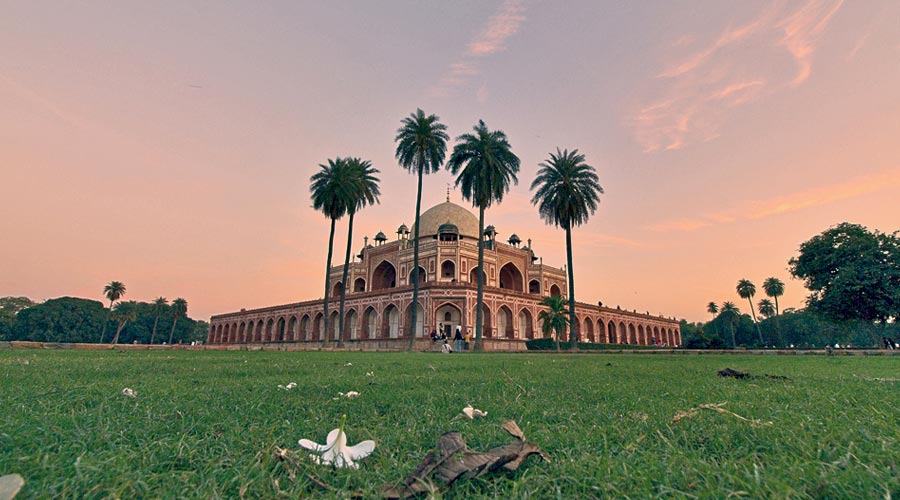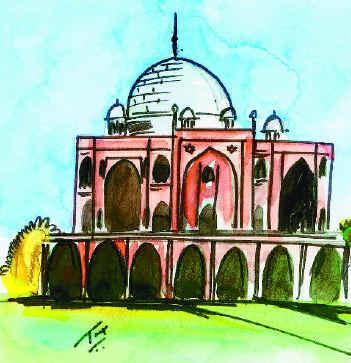NEW DELHI :
Hakim Nabina has passed into legend.
Three years older than Hakim Ajmal Khan, one was reminded of him when Ajmal Khan’s great-granddaughter came for admission to Hamdard University last week, accompanied by her father.
While Ajmal Khan’s name lives on beyond his ancestral haveli, Sharif Manzil in Ballimaran, Hakim Nabina had no fixed abode and believed to have been born in the Walled City too, got most of his fame in South Delhi where he was brought by some dealers in Unani medicine.
Born in the same year as Rabindranath Tagore, he was 105 when Dr. S. A. Ali of Hamdard met him in 1965 to seek medication for a digestive problem. The hakim, who had probably been born blind or had lost his vision in childhood, felt the patient’s pulse and diagnosed that his heart and liver were in good trim but not his digestive system. “Did you by any chance eat arbi (yams)?” he enquired. Dr Ali confessed that he had in fact had a piece of the vegetable though he was not fond of it. The hakim told him to have light food in future and prescribed some medicine which cured his ailment.’
Syed Ausaf Ali, himself an octogenarian now, says Nabina lived at Hazrat Pattey Shah’s dargah, behind Humayun’s Tomb. What he prescribed was dispensed by dealers in Unani drugs. When someone complained that the charges were very high, he advised them not to go to the dispensers but take medicine from him directly.
Pattey Shah or the saint amid tree leaves was actually named Shamsuddin Ataullah and died in AD 1300 during the reign of Alauddin Khilji. He got the nickname because whenever Hazrat Nizamuddin Auliya visited his khanqah or hospice, he would hide behind bushes and tree leaves, saying he was not worthy of coming face-to-face with the Auliya. This is what has been affirmed in Sadia Dehlvi’s book on the Dargahs of Delhi. It is said that the Shah belonged to the Chishti silsila or order of saints. “During the day he would light a fire and cover himself with its ashes, while at night he slept in a grave-like hollow (something emulated by the eccentric Spanish painter Salvador Dali, who spent his nights in a coffin). When he died Hazrat Nizamuddin led the funeral prayers as per the Shah’s last wish. Hakim Nabina seems to have developed a spiritual rapport with Pattey Shah and lived most of his long life at the latter’s shrine. When he died is not known but it was probably during Indira Gandhi’s first prime ministership, which would mean that he was nearly 110 years old at that time.
The hakim is not to be confused with Hafiz Nabina Doliwale, the blind mendicant who lived under a tree near the southern gate of the Jama Masjid. Nobody knew his real name also, except that he was one who could recite the Quran by heart (Hafiz), was blind (Nabina), wore no clothes and loved to travel free in a doli or palanquin. He and Hakim Nabina were both born in the same year (1860), when Bahadur Shah Zafar was passing his last days in Rangoon. But Hafiz Nabina died at the age of 87 much before the hakim sahib. Everybody in the city knew him and he also finds mention in Ahmed Ali’s “Twilight in Delhi” as he often visited the hero of the book, Mir Nihal. He was regarded as a majzoob (a man possessed), lost in himself and supposed to be in contact with the jinns, without much care for hygiene.
However Hakim Nabina, despite his mystical leanings, never gave the impression that he was a majzoob. His direct communion was with Pattey Shah and he passed his life in the service of those who came to him to be healed. That he could tell a patient what his illness was merely by touching him and pointing out, “Thou ailest here and here,” was a sign of his deep knowledge of human nature and anatomy and the Unani system of medication. Like Hafiz Nabina, he was a recluse but of a different sort who did not discard the ways of the world in matters of dress, behaviour and etiquette. Old-timers remember him as a worthy contemporary of Hakim Ajmal Khan, who had acquired the halo of Massiha (messiah) of the ailing populace!
source: http://www.thehindu.com / The Hindu / Home> Features> MetroPlus> /Down Memory Lane / June 22nd, 2014










